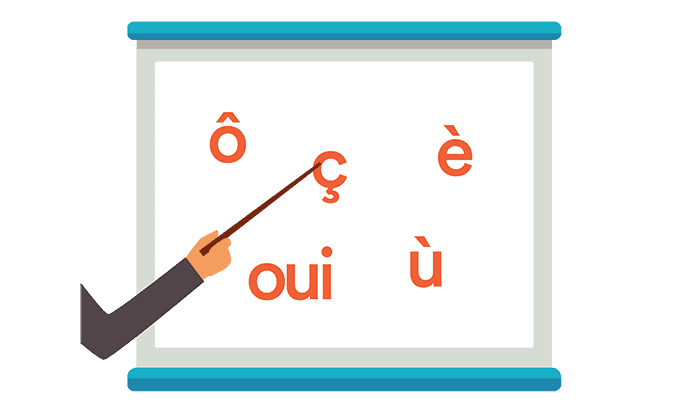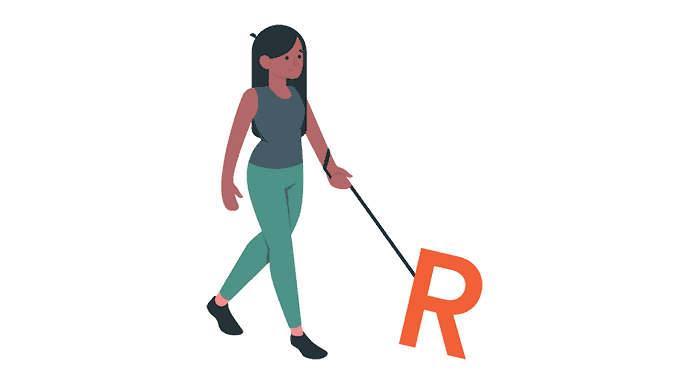Our Blog
3 Tips To Perfect Your French Pronunciation
At first (second, and third) glance, French can feel nearly impossible to pronounce. There are sounds used that don’t even exist in the English language. The letters R and U come to mind immediately. What makes it so confusing to us Anglophones (English speakers) is the familiarity of the letters but the huge dissimilarity in their pronunciation between the two languages.
There are single letters that have multiple sounds, completely silent letters and patterns, and too many rule exceptions to count, it seems. But if you think about it, English is the exact same way. If you had to explain it to a non-native speaker, you would be sharing the exact same challenges with the English language. And clearly you’ve already overcome those challenges! So if you can remember to ignore the ‘gh’ in thought, and words that blatantly ignore the “I before E except after C” rule, then you can learn to pronounce French.
This post isn’t going to dive super deep, as a textbook would, but it will give you some basic knowledge to get you started on your journey of learning French – most particularly, pronouncing it. If you’re a beginner, this is a great stepping stone before you start speaking and listening. It will also help train your brain to recognize sounds and words in French music, so you can actually form an idea of what they’re saying.
French Pronunciation 101

What you have to remember when learning a new language is that the letters will not always (in some cases, ever) sound the way you expect them to. This rings very true for both the French and English languages.
What makes French so hard is that the sounds actually outnumber the letters in the alphabet. So one letter can have dramatically different sounds. Once again, this is just like in English. Even though it’s very different from what you’re used to, it doesn’t necessarily mean it’s harder. It’s simply a matter of familiarity and repetition.
A good tool that will help get you started is a good phonetic alphabet. You can find one here. Once you’re good with that, let’s jump into the 3 most basic rules of French pronunciation.
1. Master the Letter R

This is the most recognized sound in the French language. And also the hardest to reproduce as a non-native. One thing to keep in mind; the French ‘R’ is more similar to the English letter ‘H’ than anything else. It is not the rough throat-clearing sound you think it is, but rather more subtle.
Let’s start with the technique. The sound, when done properly, originates at the back of the mouth and beginning of the throat area. You can almost touch the area on the outside; it’s where your jaw meets your neck. You want to try and thicken your tongue, spread it out at the entrance of your throat. Then exhale very gently. A few more attempts, and you should be well on your way to pronouncing the French ‘R’ correctly.
Here are some words you can practice saying now:
Rouge (Red)
Arriver (To Arrive)
Sucre (Sugar)
2. Recognize the Silent Letters

The thing that makes French seem so difficult for English natives is the disparity between the expected and actual pronunciations. The way many words are said is so different than the way they look! On some words, there could be up to 4 letters that you don’t even pronounce. Half of the word just ends up falling to the cutting board, which can get quite frustrating for the untrained ear. Well, don’t give up just yet. Let’s take a look at these tricky little letters together.
Thankfully, there’s a rule to help us out with this. It’s called the CaReFuL rule and it goes like this: if the word ends in a C,R,F,L then the ending letter is pronounced; otherwise, it is not. But there is a small exception. If a word ends in ‘e’, ‘b’, ‘k’, or ‘q’, the ending letter does get pronounced as well. Given the infrequency of words ending in these 4 letters, however, there are no rules or fun mnemonic devices by which to remember them. In summation & with little exception, C,R,F,L are the only ending letters that are pronounced in French.
One of the first silent letters, or “lettres muettes,” we’re going to look at, is the letter “X”. This one should be pretty easy to pick up on. For example, we all know how to pronounce the famous race Grand Prix, and the all too familiar drink, La Croix.
The X is commonly found after the letters -eu, -ou and i. Words like deux, epoux, prix, and heureux (respectively, two, husband, price, and happy).
The letter T is very similar, but of course there are more exceptions! For the most part, it’s silent at the end of a word, like in abricot and salut. These T’s do not get pronounced. The ones that you do pronounce are in words such as est and brut.
There are a few letter combinations that will always have a silent T. If the verb ends in -ent, all 3 letters are silent. If a verb ends with -ait or -aient, the T is silent. This is also true for when a word ends in -at; the T remains silent.
The list of silent letters and silent letter combinations goes on and on. It’s a lot to take in at once, I know. Listening to some music and reading along with the lyrics is a good way to see which letters and letter patterns get said and which ones don’t. Hopefully these little tips will give you a good starting point as you continue to navigate the language of love.
3. Don’t Let the French “U” Confuse You

After the R, the letter U is the second hardest for the French beginner. But with these tips, you’ll be saying autobus without problem or hesitation.
The sound of the French U isn’t one that exists in English, so we’re going to have to train our mouth a bit. It’s close to our ‘ou’ sound, as in soup, but not quite. Pretend you’re going to say the letter W. Now purse your lips really tight, and say the letter E. Now you’re saying the French U! That’s not confusing at all, is it?
Practice your U with these French words:
Musique (Music)
Jupe (Skirt)
Lecture (Reading)
Keep in mind that some U’s will look different. For example the French will use û and ü, but all three U’s are pronounced the exact same way. Just make sure to purse those lips, with the intent to say the letter W, and say the letter E instead.
Learning to properly tackle the subtleties in French pronunciation can really boost your confidence and motivate you to practice more. Native speakers will be able to understand you a lot better, and, in turn, you might be surprised at how well you can understand them! We can never overstate the importance of proper pronunciation. Without it, communication becomes nearly impossible and continuing your learning journey seems improbable. Read this post as many times as you need to, pull up your favorite French music playlist, and let’s get to work!
